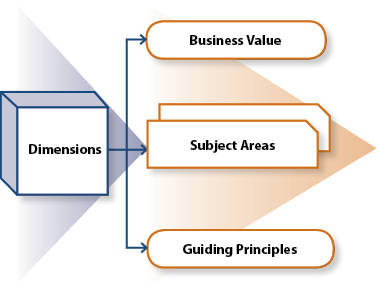… Is Supported by Appropriate Management Styles

“Simple, clear purpose and principles give rise to complex, intelligent behavior. Complex rules and regulations give rise to simple, stupid behavior.”
Dee Hock, Founder and CEO Emeritus, Visa International
There are hundreds, maybe thousands, of good books on management style, and many more articles online. If we believe the data from Google, a search for “good management style” returns 344 million results, and a search for “poor management style” returns about 10% of that. So there is certainly plenty of information available for those managers who want to improve.
A search for specific management style assessment models returns more frameworks than I will list here, but a partial list includes the following management style groupings (in no particular order and no endorsement implied):
- Country Club – Team Leader – Produce or Perish – Impoverished (Blake-Mouton)
- Entrepreneur – Producer – Administrator – Integrator (Bill Gross, Idealab incubator)
- Facilitator – Conductor – Enabler – Dominator (CalState)
- Accomplisher – Regulator – Creator – Uniter (IIOSS Management Style Model)
- Bully – Partner – Friend – Quitter (DBS Management Styles)
- Authoritative – Persuasive – Democratic – Delegative – Adaptive (Leader Syndrome)
And there are countless consultants available to help managers be more effective in their jobs. Yet we still know of many workers who complain about their managers, and how those managers inhibit the worker’s performance.
That’s why Management Style is one of the six Dimensions. In fact, it may be the most important, because a management style that inhibits workers’ performance can outweigh enabling effects of the other five Dimensions. For example, even with the best tools, staff, processes, correct metrics and an agile approach, if the senior executive has created an environment of fear, the organization will be inhibited from performing at their best.
It doesn’t matter what management styles are used. What we look at are the results of those management styles as they either inhibit or enable the workers’ performance.
Management Style Dimension

With that context, let’s look at the Management Style Dimension, starting with the Guiding Principles.
- A manager’s primary job is to enable the team’s performance – This idea may seem backwards to some managers, who believe they’re at the center and their teams are there to support them. While effective teams do support their managers, they can do that more effectively if management have created a work environment that enables their performance.
- Empowered workers are more productive – This requires trust on the part of the manager, and requires both trust at the outset and on-going support during execution. If the manager has hired the right people, provided proper training & tools, and implemented good processes, then the workers probably have better ideas for solutions than the manager does.
- Communication is key to effective management – This covers communication as a two-way event, with active listening by both parties, and includes empathy as an important enabler.
- Worker motivation goes beyond financial incentives – Using financial incentives as the primary tool to motivate workers is truly old-school, and not as effective as a broader approach to motivation. A Wharton study says, “… employers should pay greater attention to intrinsic motivation. That means designing jobs that provide opportunities to make choices, develop skills, do work that matters and build meaningful interpersonal connections.”
- Integrity is critical – This should go without saying, but I suspect we’ve all seen managers who shade the truth (or outright lie) in order to achieve their objectives. Once trust is broken, it is very hard to get it back, and the damage to the organization can be significant and long-lasting.
Given those Guiding Principles, let’s look at the Subject Areas:
- Empowerment (Support / Trust) – We discuss levels of trust, micromanagement, support provided to enable success for empowered activities, receptivity to worker ideas, and flexibility with rules and guidelines.
- Collaboration (Change / Flexibility) – We try to understand the way changes are implemented, the involvement and input of the workers, and receptivity to workers’ ideas.
- Innovation (Risk-taking / Error tolerance) – Companies are realizing that innovation is critical for survival in today’s rapidly changing business environment, and in this Subject Area we discuss management style as it relates to fostering innovation, how risk-taking is managed, and the responses to “failures.”
- Communication / Empathy – The Discussion Points address clarity of communication (both ways), presence of empathy, active listening, degree of shared information, and willingness to admit error (both ways).
- Motivation (Credit / Fear) – We discuss topics that help us understand how the workers are motivated. Do they feel valued? Is feedback positive and constructive? What’s the work-life balance? Is discipline appropriate, private and timely? Does the organization invest in its people?
- Integrity – Do the managers “walk the talk?” Do they keep their promises? Do they lead by example? Do the staff trust them?
What’s Next
We’ve now completed all six Dimensions, focusing on context, Guiding Principles, and Subject Areas. It’s been fairly abstract, and not always easy to apply to the “real world” in which we work. What is more concrete is what happens when we move pairs of Dimensions from inhibiting to enabling. Join me next week for a discussion of “the edges.”
Until Then …
“People rarely succeed unless they have fun in what they are doing.”
Dale Carnegie

What are your thoughts? Please share your comments in the block below.